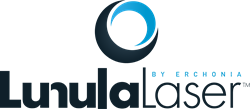Laser Treatment of Fungal Toenails
What are Lasers?
Lasers are devices that generate concentrated light that is of the same wavelength. "Light" in this sense is both visible and invisible electromagnetic emanations. This concentrated light enables the energy to be focused in a small area for precise application. The wavelengths that different lasers generate have different properties and are used for different purposes.
In healthcare, lasers have been used primarily as heat-generators for use in surgery, for tissue destruction or as a cutting or cauterization device. They have also been used therapeutically to stimulate healing in wounds and musculoskeletal injuries.
Laser Use for Fungal Toenails
The first laser to receive FDA approval for the treatment of fungal toenails was PinPointe. Subsequent approvals for numerous lasers from the FDA were based on the "similarity" of other lasers to the PinPointe laser. The presumed mechanism of action for these lasers (all of similar wavelength) was heat: heat generated at the level of the fungal elements under the nail such that they died. The laser spot light was applied to areas of the nail(s) and "zapped" with the light. Wavelengths above 900 nanometers require more power to be used and generate heat. Clearing of nails did occur, with varying success rates. Usually the best results were with the least involved, and the most involved nails were the most difficult to clear. Different protocols have been attempted to maximize the success rate, usually requiring at least two treatments per involved nail, at varying intervals. These lasers are classified as Class IV high-level energy lasers.
More recently, a different approach to using laser light to treat fungal toenails has been developed. Utilizing two different wavelengths, this laser's purpose is to effect the death of the fungal cells by generating toxic molecules to which they are sensitive, and also to stimulate the body's circulation and immune response in the area. These lasers generate wavelengths in the visible light range, and are considered low-level energy "cold" lasers (Class II). They do not generate heat. These are different (shorter) wavelengths than the high energy lasers, and have the different effects. The Erchonia Lunula Laser is the only laser utilizing this technology and recently received (2016) FDA approval for treatment for clearing of fungal toenails. For more information on the LunulaLaser from the manufacturer, click here. The Lunula Laser is utilized in this practice for the treatment of fungal toenails. For more information on treatment of fungal toenails, click here.
Lunula Consumer Piece from Erchonia Corporation on Vimeo.
Protocol
Weekly applications are required because the cumulative effect is necessary for effectiveness.
Lunula Laser protocol is based on the % of any nail involvement. All nails require at least 4 treaments.
50% or less involvement of nail requires 4 weekly treatments.
60% to 75% involvement: recommended additional 4 treatments, but depends on response.
80-100% nail involvement requires 8 treatments, with a 6-8 week break after the first four.
The Lunula Laser is configured to treat one foot at a time. Involvement on 2 feet requires 2 separate applications.
Cost is based on the number of treatments required with the Lunula Laser. There is no insurance coverage for laser therapy. This does qualify as a medical expense for Health Savings Accounts or income tax return purposes.


